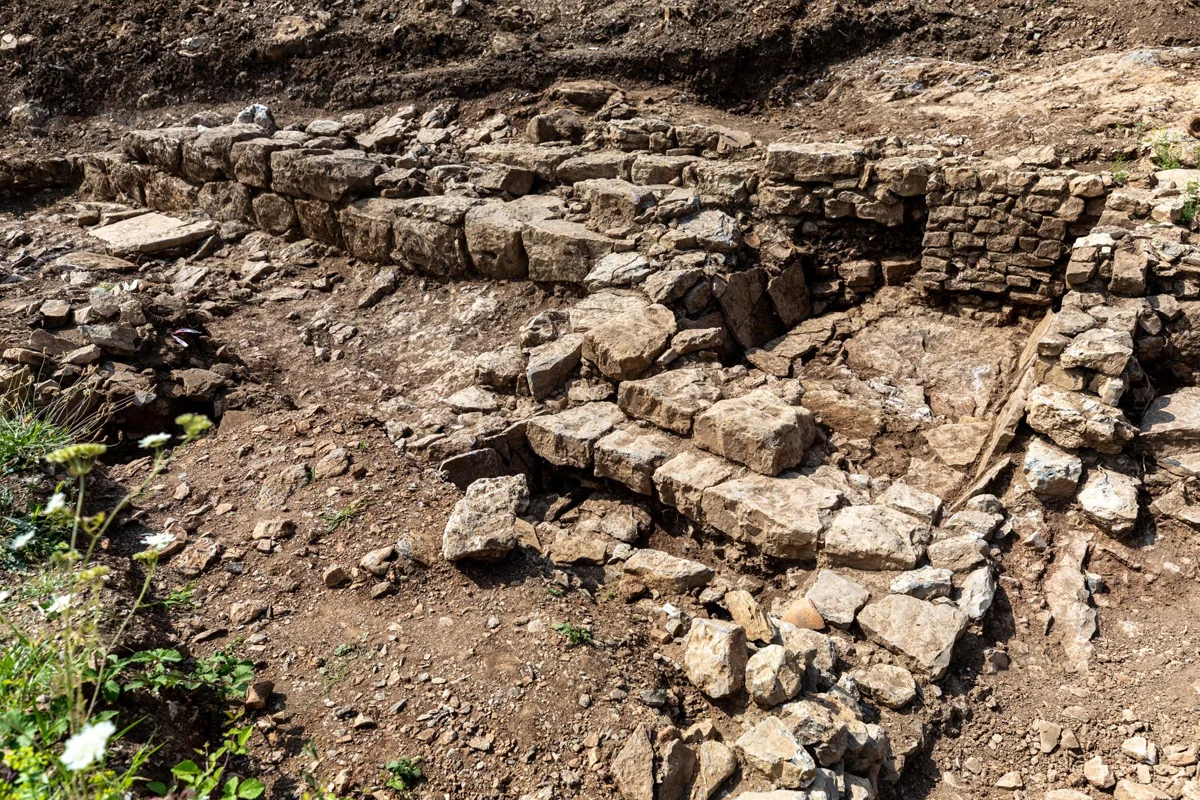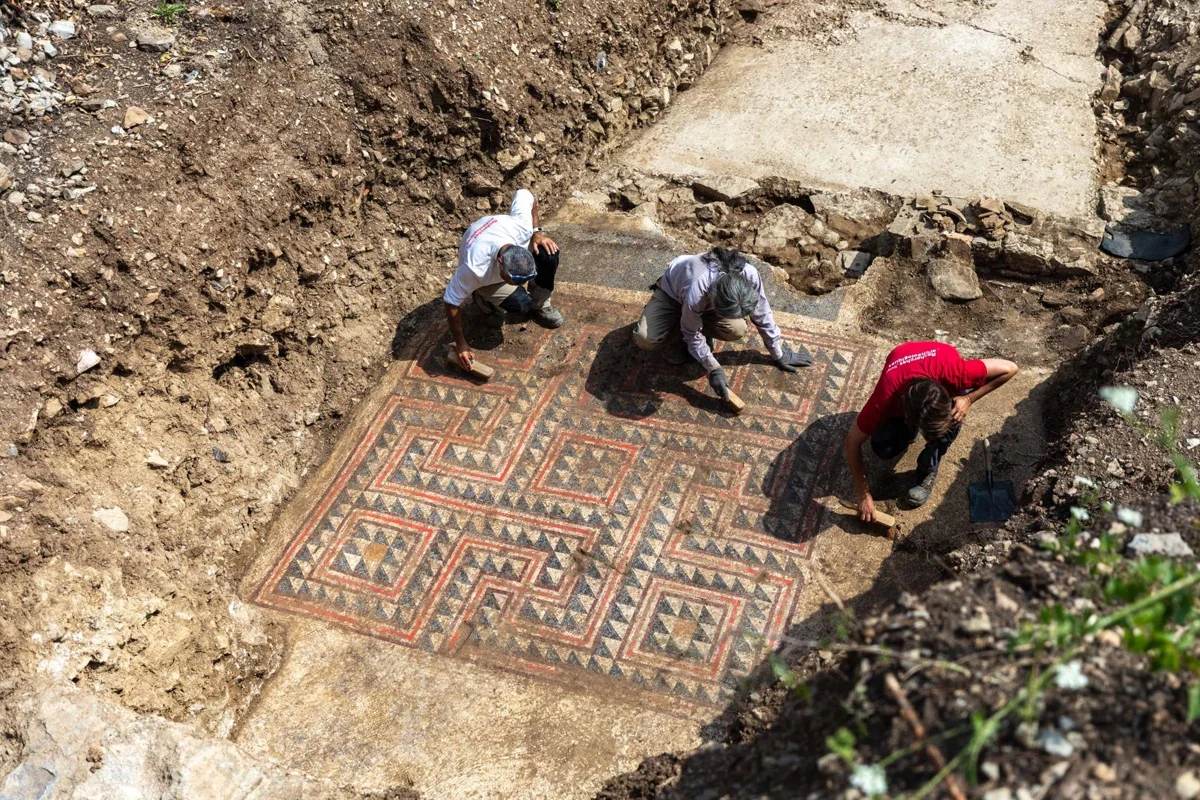A recent excavation led by Inrap has uncovered a remarkably well-preserved Roman-era settlement on the slopes of the Hermitage hill overlooking Alès, southern France.
The excavation, carried out under the direction of the French government (Drac Occitanie), studied a 3,750-square-metre area and revealed evidence of dense, uninterrupted occupation spanning from the 2nd to the 6th centuries AD.
Among the most significant discoveries is a richly decorated polychrome mosaic floor set within a 4.5 x 3.8 metre room that forms part of a large residential complex.
It features intricate black-and-white geometric interlacing, with some tesserae painted purplish red, and others enhanced with deep red or yellow pigments. A preliminary analysis also suggests the use of cinnabar, a costly mineral pigment for the period.

The mosaic’s surroundings suggest it may have been a formal room, perhaps part of a domus – a Roman urban house typically owned by a wealthy family. Adjacent, white-tiled sections may have served as alcoves or supported furnishings, while a border of white crosses on a black background is thought to mark a doorway leading to another space.
According to the archaeologists, the residence underwent multiple phases of development. Initially featuring compacted earth floors, it was later upgraded with lime concrete paving, and some sections inlaid with mosaic tesserae.
A sophisticated water management system was also uncovered, featuring a drainage conduit made from interlocked amphorae fragments that is designed to channel rainwater from the roof safely away from the building.
Elsewhere on the site, four dwellings partially built into limestone bedrock demonstrate advanced Roman engineering. Their walls were coated with clay to prevent water infiltration and tile-pipe drainage systems channelled excess moisture.
To the south of the excavation area, a small burial ground dating from the mid-5th to late 6th century AD was also uncovered. Ten graves, oriented with heads to the west, likely contained individuals buried in wooden coffins. Most lacked grave goods, though two additional isolated graves nearby suggest a continued burial tradition into Late Antiquity.
Header Image Credit : A. Farge – Inrap
Sources : Inrap





